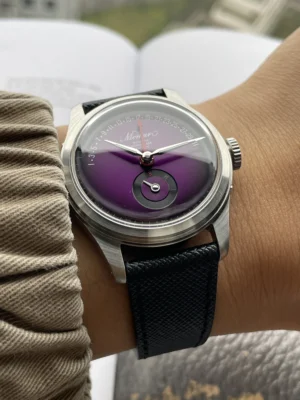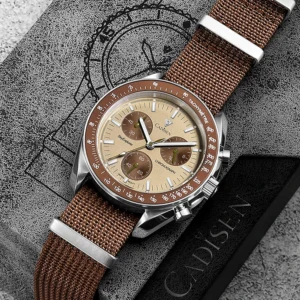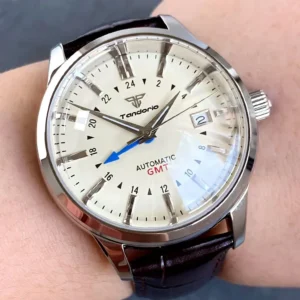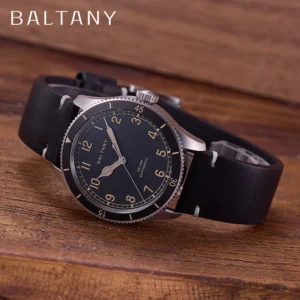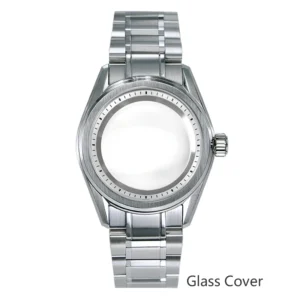Introduction to Multi-Timezone Watches
Multi-timezone watches are specialized timepieces designed to track time in multiple time zones simultaneously. These mechanical marvels represent the perfect blend of practicality and horological craftsmanship, serving the needs of international travelers, business professionals, and watch enthusiasts alike.
In today’s globally connected world, the ability to track time across different regions has become increasingly valuable. Whether you’re coordinating international conference calls, planning travel itineraries, or simply staying connected with loved ones abroad, multi-timezone watches offer an elegant solution that doesn’t require battery power or internet connectivity.
These specialized timepieces generally fall into three main categories:
- GMT watches: Feature an additional 24-hour hand that tracks a second time zone
- Dual Time watches: Display two separate time zones with distinct dial elements
- World Timer watches: Show all 24 major time zones simultaneously around the dial
Beyond their practical applications, these watches showcase remarkable historical dive watch engineering principles and mechanical ingenuity. Even in our digital age, the intricate mechanisms inside these watches continue to fascinate collectors and professionals who appreciate traditional craftsmanship merged with practical functionality.
The collection of GMT automatic watches demonstrates how watchmakers have addressed the need for time zone tracking with mechanical brilliance rather than digital shortcuts.
Understanding Time Zones and Reference Points
Time zones exist because the earth rotates, creating a continuous cycle of day and night across different longitudes. Before standardized time, each town kept its own local time based on the sun’s position. This created chaos for railroad schedules and international coordination in the late 19th century.
The 1884 International Meridian Conference established Greenwich, England as the prime meridian (0° longitude), with Greenwich Mean Time (GMT) as the world’s time standard. This established a system of 24 standard time zones, each ideally 15 degrees of longitude wide (representing one hour of the Earth’s rotation).
GMT remained the primary time standard until the 1970s, when it was largely replaced by Coordinated Universal Time (UTC) as the world’s scientific time standard. UTC uses highly precise atomic clocks rather than astronomical observations. However, GMT remains widely used in watchmaking terminology due to its historical significance and simplicity.
These reference points serve as the foundation for multi-timezone watches. By establishing one fixed reference time (usually GMT/UTC), these watches can track relative time differences across various zones. This relationship mirrors similar developments seen in the evolution of dive watch technology, where standardized reference points enabled precise underwater timing.
Understanding this foundation is essential to appreciating how these specialized timepieces work, as we’ll explore in the following sections.
GMT Watches: The Traveler’s Essential Timepiece
GMT watches represent the most common and straightforward approach to tracking multiple time zones. Originally designed for airline pilots in the 1950s, these watches feature a distinctive fourth hand that makes one complete rotation every 24 hours (half the speed of the regular hour hand).
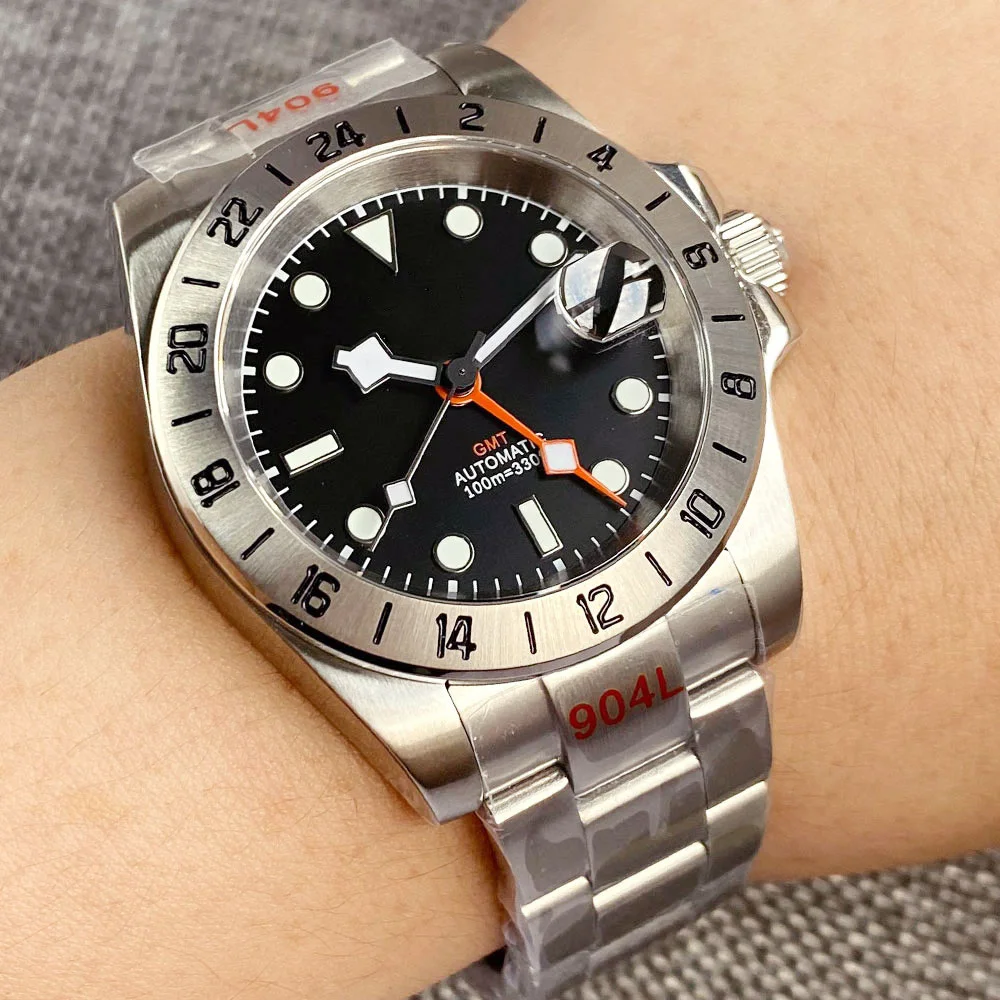
Core Components and Functionality
The primary components that enable GMT functionality include:
- 24-hour hand: An additional hand that completes one rotation per day
- Rotating bezel: A bidirectional bezel with 24-hour markings
- Fixed 24-hour scale: Either on the bezel or printed on the dial
The 24-hour hand is connected to the main timekeeping gear train through a complex series of gears that reduce its rotation speed to exactly half that of the standard hour hand. This mechanical connection ensures that both time displays remain synchronized.
True GMT vs. Caller GMT
There are two main variations of GMT watches:
True GMT (Flyer GMT): Features an independently adjustable local hour hand that can be set forward or backward in one-hour increments without stopping the watch. This allows travelers to easily adjust to local time upon arrival without affecting the home time display.
Caller GMT (Office GMT): The GMT hand is independently adjustable while the main hands stay fixed. This setup is ideal for those who remain in one time zone but need to track time elsewhere, like making international calls.
Many GMT dive watches incorporate these features alongside their water resistance capabilities, making them versatile tools for traveling divers.
Setting and Reading a GMT Watch
To set a typical GMT watch:
- Pull the crown to position 2 (middle position) to set the GMT hand
- Turn the crown to position the GMT hand according to your reference time zone
- Pull the crown to position 3 (outermost) to set the main hands to local time
- Push the crown back to position 1 to resume timekeeping
To track a third time zone, simply rotate the bezel to align the desired hour offset with the GMT hand. This versatile system allows for understanding GMT on dive watches and other timepieces in practical situations.
The 24-hour format of the GMT hand also provides day/night differentiation, eliminating confusion about whether it’s AM or PM in the reference time zone—a crucial feature for international communication.
Dual Time Watches: Two Time Zones with Distinct Displays
Dual time watches offer a different approach to multi-timezone tracking compared to GMT watches. Rather than using a 24-hour hand, they typically employ completely separate displays for each time zone, making them particularly intuitive to read at a glance.
Display Methods and Mechanics
Dual time watches implement their functionality through various designs:
- Secondary subdial: A smaller dial within the main dial shows the second time zone
- Independent hour hand: Two hour hands operate on the same dial but move independently
- Digital-analog combination: A digital display shows one time zone while analog hands show another
What makes dual time watches mechanically unique is the independence between the two time displays. While GMT watches often link their hands through the same gear train, dual time mechanisms typically feature separate gear systems that can be set individually.
This independence requires sophisticated mechanical solutions. Some watches use a differential system that allows for separate adjustment while maintaining accurate timekeeping. Others employ entirely separate movements within the same case.
Setting and Reading Dual Time Watches
The setting process varies depending on the specific implementation:
- For subdial systems: One crown position adjusts the main time, another adjusts the secondary time
- For dual hour hand systems: A pusher often moves the secondary hour hand in one-hour increments
- For hybrid systems: Different controls adjust different displays
A significant advantage of dual time watches is their use of traditional 12-hour formats for both time zones, which many users find more intuitive than the 24-hour format of GMT watches. However, this creates the need for AM/PM indicators to prevent confusion, which are typically implemented through day/night windows or color-coded zones on the dial.
The GMT pilot watches collection demonstrates how these principles are applied in aviation timepieces, where quick and intuitive reading of multiple time zones is essential.
World Timer Watches: Global Time at a Glance
World timer watches represent the most complex and comprehensive approach to multi-timezone functionality. These remarkable timepieces display all 24 major time zones simultaneously, allowing for a truly global perspective on time.
Mechanical Complexity and Components
The heart of a world timer watch consists of these key elements:
- City ring: A rotating disc or ring displaying 24 cities representing major time zones
- 24-hour ring: A rotating disc marked with 24 hours, often with day/night coloration
- Adjustment mechanism: Pushers or crown positions that synchronize the system
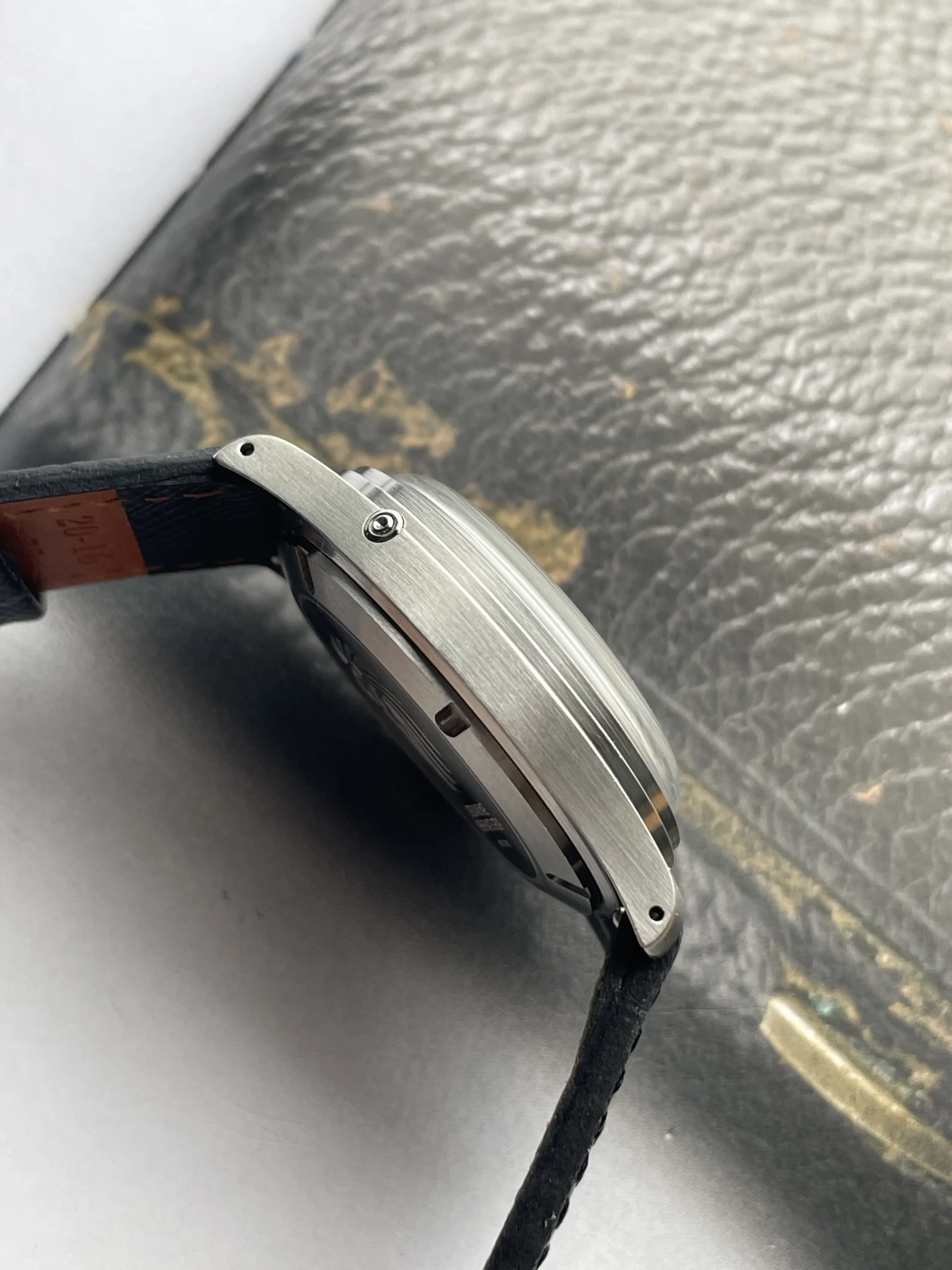
The ingenuity of this system lies in the synchronized rotation of the city and hour discs. When properly set, the 24-hour ring rotates once per day, and each city on the outer ring aligns with its current time on the hour disc. This creates a continuously updated global time display without requiring any further adjustment.
Swiss watchmaker Louis Cottier revolutionized this concept in the 1930s with his elegant mechanical solution that could display world time with remarkable efficiency. His design principles continue to influence modern world timer watches.
Setting and Reading a World Timer
To set a world timer watch:
- Set the main hands to your local time
- Align your current location on the city ring with the current hour on the 24-hour ring
- The system now displays the correct time for all cities on the ring
Once set, reading time in any city simply requires finding that city on the ring and noting which hour on the 24-hour disc aligns with it. Most world timers use color-coding (often blue for night, white or silver for day) to indicate whether it’s day or night in each time zone.
For those considering different options, understanding the differences between dual timezone vs. triple timezone functions helps in selecting the right watch for specific needs.
Shared Horological Mechanisms and Innovations
Despite their different approaches, multi-timezone watches share several underlying horological principles. The mechanical challenge in all cases involves tracking different time cycles simultaneously while maintaining accuracy.
At their core, these watches rely on differential systems—mechanical components that allow related but separate timing functions. These systems use specialized gear trains to create different rotation speeds from the same power source. For example, in GMT watches, the differential allows the 24-hour hand to rotate at exactly half the speed of the regular hour hand.
One of the most significant innovations in multi-timezone watches has been the development of quick-set functions. These allow users to adjust hour hands or time zone displays without stopping the watch’s main timekeeping functions. Modern quick-set mechanisms use a series of gears and springs that temporarily decouple certain elements while adjustments are made.
Another crucial development has been jumping hour mechanisms, which allow precise timezone changes without disturbing minute and second timing. These clever systems use spring energy to “snap” the hour hand to its new position rather than moving it gradually.
The longevity and reliability of these complex mechanisms speak to their remarkable engineering. Understanding how long automatic watches last provides insight into the durability of these sophisticated complications.
Historical Evolution of Multi-Timezone Watches
The development of multi-timezone watches parallels the history of global travel and commerce. As transportation evolved from ships to trains to airplanes, the need for tracking time across distances became increasingly important.
Early solutions appeared in pocket watches during the late 19th century, when railroad expansion created a need for standardized time. These early models often featured multiple dials or subdials showing different local times.
The world timer concept emerged in the 1930s when Louis Cottier developed his ingenious system for simultaneously displaying multiple time zones. His designs were adopted by prestigious manufacturers who recognized their utility for an increasingly connected world.
The 1950s saw the birth of the GMT watch as commercial air travel expanded globally. Designed specifically for pilots crossing multiple time zones, these watches emphasized practicality and readability under demanding conditions.
During the quartz crisis of the 1970s and 1980s, digital watches briefly dominated the multi-timezone market with simple pushbutton time zone changes. However, as mechanical watchmaking experienced a renaissance in the 1990s, traditional multi-timezone complications returned with renewed appreciation for their craftsmanship.
Today’s automatic pilot watches continue this tradition, combining historical design elements with modern manufacturing techniques to create timepieces that are both functional tools and expressions of horological heritage.
Choosing the Right Multi-Timezone Watch for Your Needs
Selecting the ideal multi-timezone watch depends largely on your specific requirements and preferences:

Comparison of Multi-Timezone Watch Types
| Watch Type | Ideal For | Key Advantage | Limitation |
|---|---|---|---|
| GMT | Frequent travelers to 1-2 time zones | Easy adjustment when changing zones | Limited to tracking 2-3 zones |
| Dual Time | Business professionals needing home/office time | Intuitive reading with separate displays | Usually limited to just two zones |
| World Timer | Global travelers or those working with international teams | Displays all time zones simultaneously | More complex to set and read |
For frequent travelers, a True GMT watch offers the most practical solution with its independently adjustable hour hand that makes adaptation to new time zones simple. Business professionals who mainly stay in one location but communicate internationally might prefer a Dual Time watch for its clear, separate displays.
Those who regularly work with multiple international locations will appreciate a World Timer’s comprehensive global view, despite its slightly steeper learning curve.
The specific features in multi-timezone pilot watches demonstrate how these concepts are implemented for aviation professionals with particular emphasis on legibility and quick adjustment.
Classic Automatic Dress Watches, Day Date Automatic Watches, Perpetual Calendar Automatic Watches
Price range: $540.60 through $574.60 Select options This product has multiple variants. The options may be chosen on the product pageAutomatic Chronograph Watches, Chronograph Pilot Watches
Price range: $233.36 through $237.58 Select options This product has multiple variants. The options may be chosen on the product pageClassic Automatic Dress Watches, GMT Automatic Watches, GMT Pilot Watches
Price range: $1,240.86 through $1,463.33 Select options This product has multiple variants. The options may be chosen on the product pageClassic Automatic Dress Watches, GMT Automatic Watches, GMT Dive Watches
Price range: $468.93 through $552.94 Select options This product has multiple variants. The options may be chosen on the product pageClassic Pilot Watches, Military Inspired Automatic Watches
$561.00 Select options This product has multiple variants. The options may be chosen on the product pageGMT Automatic Watches, Unique Automatic Watches
$420.10 Select options This product has multiple variants. The options may be chosen on the product page
The Mechanical Artistry Behind Multi-Timezone Functionality
What makes multi-timezone watches so fascinating is the elegant mechanical solutions they employ to solve practical problems. These complications represent remarkable feats of miniaturization and precision engineering.
Consider that within a case often less than 40mm in diameter and under 15mm thick, watchmakers must fit:
- The standard timekeeping components (mainspring, gear train, escapement)
- Additional gears and mechanisms for the timezone functions
- User interfaces like extra hands, rotating bezels, or city discs
- All while maintaining accuracy and reliability
The beauty of these watches lies in how they transform complex mechanics into intuitive interfaces. A simple turn of the bezel or press of a pusher activates intricate systems of gears, springs, and levers working in harmony beneath the dial.
This blend of engineering and artistry explains why mechanical multi-timezone watches continue to thrive alongside digital alternatives. The perpetual calendar automatic watches collection shows how these complex complications can be combined with other sophisticated functions.
Are Multi-Timezone Watches Still Relevant in the Digital Age?
In an era where smartphones display multiple time zones with a few taps, many wonder if mechanical multi-timezone watches remain relevant. The answer is a resounding yes, for several compelling reasons:
- Independence: They require no batteries, charging, or connectivity
- Immediacy: They display information at a glance without waking screens or navigating menus
- Reliability: They function in environments where electronic devices might fail
- Craftsmanship: They represent centuries of horological tradition and innovation
- Permanence: Well-maintained mechanical watches can function for generations
Consider a business traveler crossing time zones: their phone might be in airplane mode, out of battery, or simply packed away, but a glance at their GMT watch instantly orients them to both local and home time.
The enduring appeal of these watches isn’t just practical—it’s emotional. They connect us to an unbroken tradition of human ingenuity that stretches back centuries, solving problems through clever mechanical means rather than algorithms and electronics.
Which Multi-Timezone Watch Mechanism Is Most Accurate?
A common misconception is that more complex watch mechanisms must be either more or less accurate than simpler ones. In reality, the accuracy of a multi-timezone watch primarily depends on its base movement rather than its timezone complication.
All multi-timezone watches rely on the same fundamental timekeeping elements: a mainspring, gear train, and escapement. The additional timezone functions simply display this same timekeeping information in different formats. Therefore, a GMT, Dual Time, and World Timer watch built with identical base movements should theoretically maintain similar accuracy.
Where differences can emerge is in how timezone adjustments affect the watch’s operation. Watches with truly independent hour hand systems allow for timezone changes without stopping the movement, which can help maintain better accuracy during travel. Some advanced GMT watches allow the hour hand to be adjusted without affecting the minutes or seconds, minimizing disruption to timekeeping.
It’s worth noting that many high-end multi-timezone watches achieve chronometer certification, guaranteeing accuracy within -4 to +6 seconds per day regardless of their complication type. This demonstrates that complexity and precision can certainly coexist in fine watchmaking.


